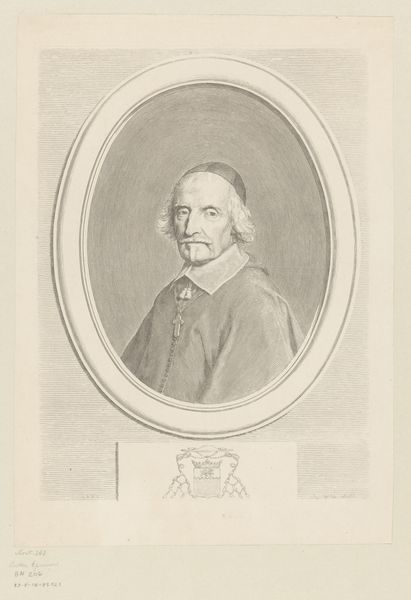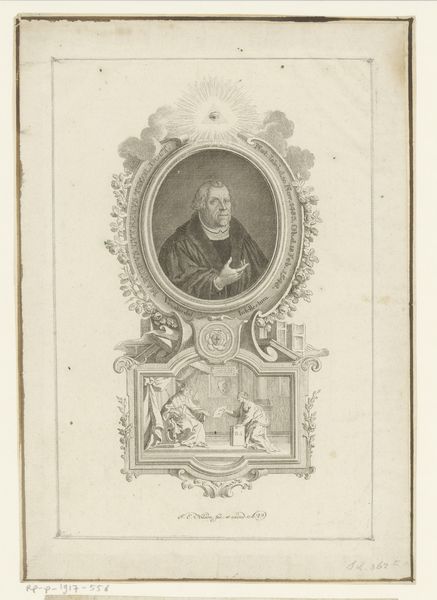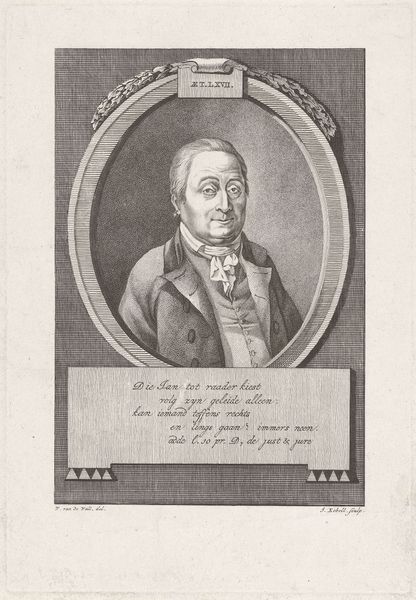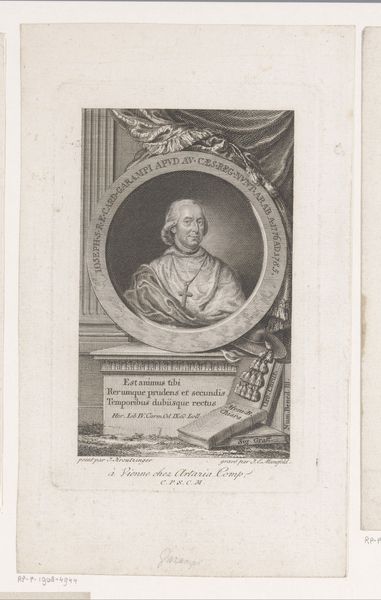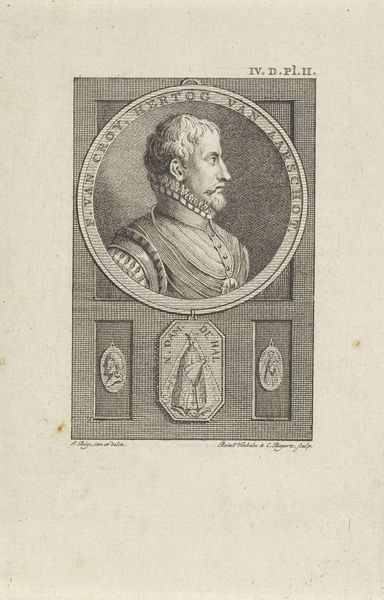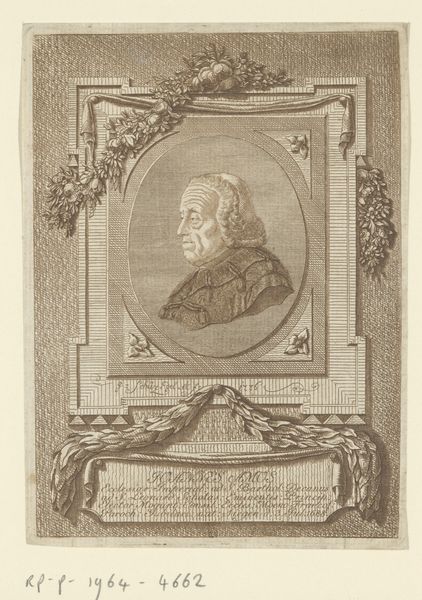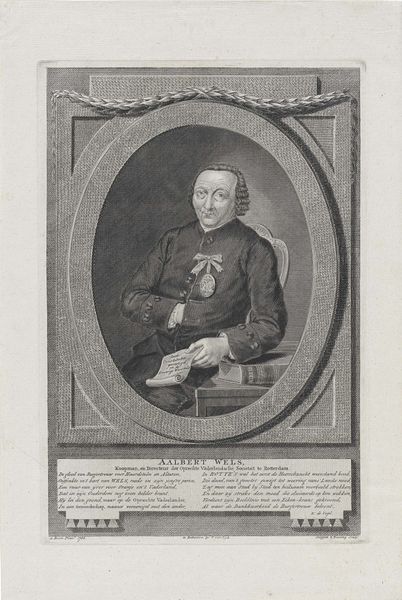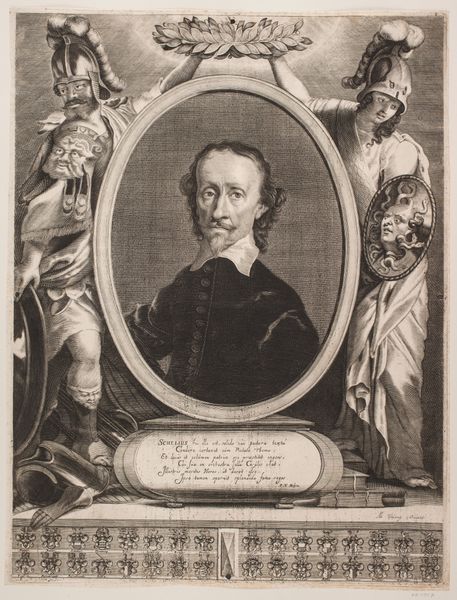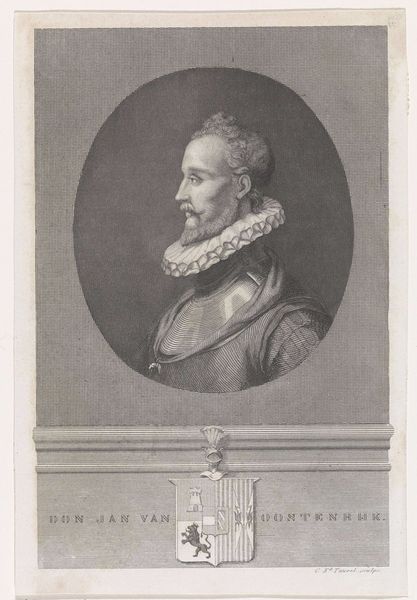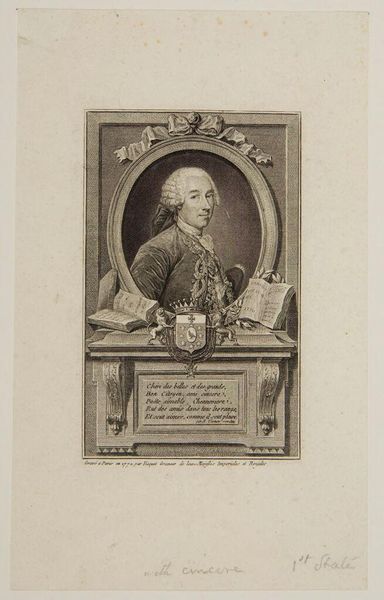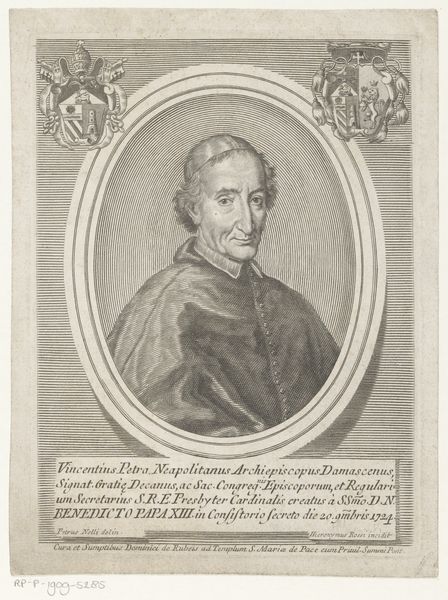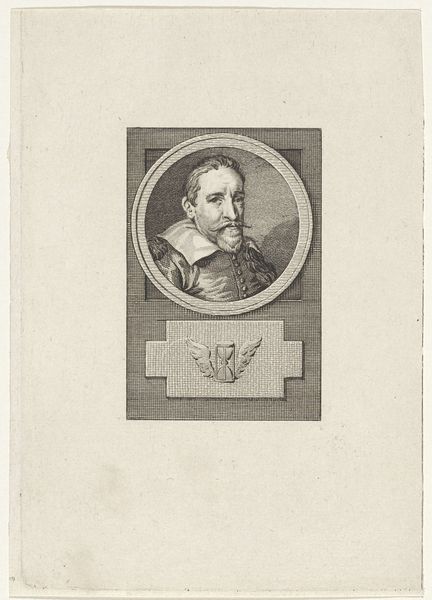
print, engraving
#
portrait
#
neoclacissism
# print
#
history-painting
#
engraving
#
realism
Dimensions: height 129 mm, width 96 mm
Copyright: Rijks Museum: Open Domain
This is Antoni Zürcher's portrait of Johann Kaspar Lavater, made with engraving techniques. Look closely, and you will appreciate that the image isn't drawn, but carved with fine lines into a metal plate, likely copper, and then printed. The engraver uses burins and other tools to create a dense network of lines that build up the image and capture the texture of Lavater's coat, and hair. The effect is precise, almost photographic, yet entirely handmade. Engraving was a painstaking process, demanding immense skill and patience. This process was highly valued, particularly in the 18th and 19th centuries, when printed images circulated widely. It was a key technology for disseminating knowledge and reproducing works of art. The portrait gives us a glimpse into the labour-intensive practices behind even seemingly simple images, reminding us that the value of art lies not only in its aesthetic qualities but also in the skill and effort embedded within its making.
Comments
No comments
Be the first to comment and join the conversation on the ultimate creative platform.

